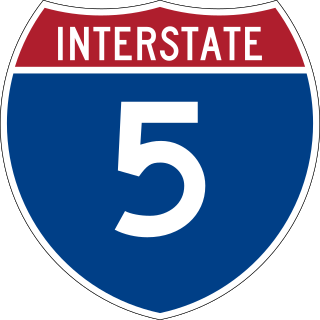Clackamas County

- Milwaukie Pioneer Cemetery in Milwaukie
- Mountain View Cemetery in Oregon City
- Sisters' Cemetery adjacent to the Marylhurst University in Marylhurst
This list of cemeteries in Oregon includes currently operating, historical (closed for new interments), and defunct (graves abandoned or removed) cemeteries, columbaria, and mausolea which are historical and/or notable. It does not include pet cemeteries.






The Portland metropolitan area is a metro area with its core in the U.S. states of Oregon and Washington. It has 5 principal cities the largest being Portland, Oregon. The U.S. Office of Management and Budget (OMB) identifies it as the Portland–Vancouver–Hillsboro, OR–WA Metropolitan Statistical Area, a metropolitan statistical area used by the United States Census Bureau (USCB) and other entities. The OMB defines the area as comprising Clackamas, Columbia, Multnomah, Washington, and Yamhill Counties in Oregon, and Clark and Skamania Counties in Washington. The area had a population of 2,512,859 at the 2020 census, an increase of over 12% since 2010.

Area codes 541 and 458 are telephone area codes in the North American Numbering Plan (NANP) for most of the U.S. state of Oregon, excluding only the northwestern corner of the state. The service area includes the cities of Eugene, Springfield, Corvallis, Albany, Medford, Bend, Ashland, Klamath Falls, The Dalles, Burns, Lakeview, and Pendleton, as well as the coastal region from Lincoln County to the California border. Area code 541 was created in an area code split from area code 503 on November 5, 1995. Area code 458 was added to the same service area on February 10, 2010 to form an overlay.

The Oregon School Activities Association (OSAA) is a non-profit, board-governed organization that regulates high school athletics and competitive activities via athletic conferences in the U.S. state of Oregon, providing equitable competition among its members, both public and private. The OSAA is based in Wilsonville.

Interstate 5 (I-5) in the U.S. state of Oregon is a major Interstate Highway that traverses the state from north to south. It travels to the west of the Cascade Mountains, connecting Portland to Salem, Eugene, Medford, and other major cities in the Willamette Valley and across the northern Siskiyou Mountains. The highway runs 308 miles (496 km) from the California state line near Ashland to the Washington state line in northern Portland, forming the central part of Interstate 5's route between Mexico and Canada.

Eugene station is a train station in Eugene, Oregon, United States. It is served by Amtrak's Coast Starlight passenger train and is the southern terminus of the Amtrak Cascades corridor. The station is also served by the Cascades POINT bus service.
Rail transportation is an important element of the transportation network in the U.S. state of Oregon. Rail transportation has existed in Oregon in some form since 1855, and the state was a pioneer in development of electric railway systems. While the automobile has displaced many uses of rail in the state, rail remains a key means of moving passengers and freight, both within the state and to points beyond its borders.
The Pamplin Media Group (PMG) is a media conglomerate owned by Robert B. Pamplin, Jr. and operating primarily in the Portland metropolitan area in the U.S. state of Oregon. As of 2019, the company owns 25 newspapers and employs 200 people.
In the United States, Canada, Australia, and elsewhere, a pioneer cemetery is a cemetery that is the burial place for pioneers. American pioneers founded such cemeteries during territorial expansion of the United States, with founding dates spanning, at least, from the late 18th to early 20th centuries.

William Christmas Knighton was an American architect best known for his work in Oregon. Knighton designed the Governor Hotel in Portland, Johnson Hall at the University of Oregon, and the Oregon Supreme Court Building and Deepwood Estate in Salem. He served as Oregon's first state architect from 1911–1915, appointed by Governor Oswald West. By 1915, Knighton had designed ninety building projects as state architect. In 1919, Knighton was appointed by Governor Ben Olcott as the first president of the Oregon State Board of Architectural Examiners, a position he held until 1922. In 1920, Knighton was elected the sixth president of the Oregon Chapter of the American Institute of Architects. He remained on the chapter's board of trustees for several years and was chair of the Chapter Legislative Committee into the 1930s.
A pioneer cemetery is a cemetery for the earliest settlers in an area.

Povey Brothers Studio, also known as Povey Brothers Art Glass Works or Povey Bros. Glass Co., was an American producer of stained glass windows based in Portland, Oregon. The studio was active from 1888 to 1928. As the largest and best known art glass company in Oregon, it produced windows for homes, churches, and commercial buildings throughout the West. When the firm was founded in 1888, it was the only creative window firm in Portland, then a city of 42,000 residents.
An education service district (ESD) is a regional education unit in the U.S. state of Oregon. ESDs work to provide the various counties' school districts with a wide array of educational programs and services, many of which are too costly or limited in demand for a single location. By coordinating a program or service among multiple districts, Oregon ESDs are able to moderate costs.

Charles Henry Burggraf (1866–1942) was an American architect primarily working in Salem, Oregon, and Albany, Oregon, who also worked in Hastings, Nebraska, and in Grand Junction, Colorado. A number of his works are listed on the U.S. National Register of Historic Places (NRHP).

Virgil Conn was an American businessman and state legislator from the state of Oregon. He served two two-year terms in the Oregon House of Representatives as a Republican legislator, representing a large rural district in south-central Oregon. He also ran a general store in Paisley, Oregon, and was that town's postmaster for many years. Later in his life, he owned a dairy farm near Roseburg, Oregon.